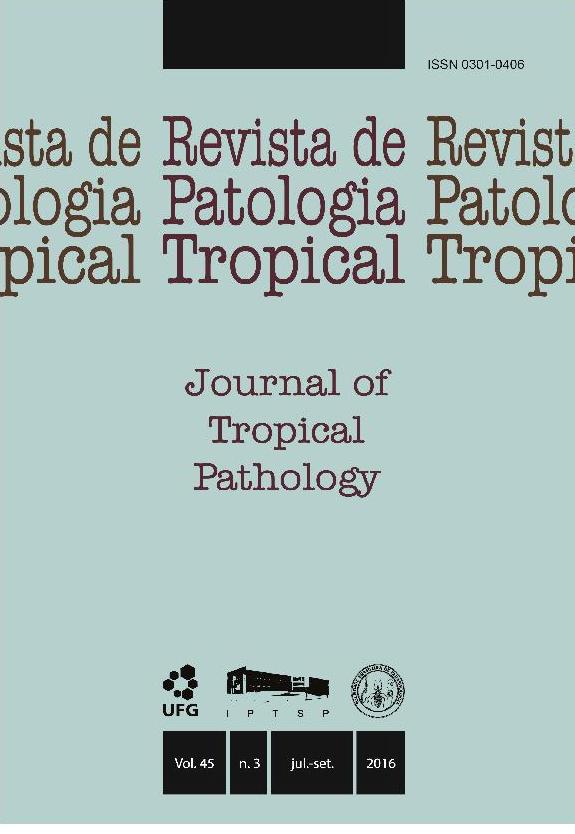EPIDEMIOLOGY OF DENGUE VIRUS FROM 2002-2012 IN SAO LUIS, MARANHAO STATE, BRAZIL
DOI:
https://doi.org/10.5216/rpt.v45i3.43503Keywords:
Aedes aegypti, dengue fever, incidence, epidemiological surveillance.Abstract
The purpose of this study is to relate the incidence of dengue with demographic, temporal and meteorological data, to identify the areas with the highest incidence of the disease and determine the most prevalent serotypes from 2002 to 2012, inSão Luís, MA. Data were obtained from the reports of dengue cases so far reported, and available at the Municipal Health, Epidemiology and Sanitation Surveillance Office of São Luis, MA. Descriptive statistics were calculated for all the relevant variables, such as age, gender, weather conditions, distribution of dengue serotypes and building infestation index (BII) by A. aegypti larvae. A total of 21,986 dengue cases were notified to the surveillance system of São Luis-MA, corresponding to 34.3% of all cases reported in the state during the study period. The most affected age group was 20 to 49 years of age, with no gender predominance. The correlation between the reported dengue cases and weather conditions such as rainfall, temperature and humidity, showed that the incidence of dengue cases fluctuated with these meteorological variables. The number of cases increased during the first half of the study period, which corresponds to the rainy season and rises in temperature, while in the dry intervals, the trend was downward (from July to December). Under the same conditions, there was an increase in the severe form of dengue, namely dengue hemorrhagic fever (DHF) in the population previously exposed to serotypes 1, 2, and 3. The BII by A. aegypti was higher from 2001 to 2007 and in 2011.The highest numbers of dengue cases occurred concomitantly with the highest rates of BII recorded inSao Luis,MA.
Downloads
Downloads
Published
How to Cite
Issue
Section
License
The manuscript submission must be accompanied by a letter signed by all authors stating the full name and email address, confirming that the material has not been published or is under consideration for publication elsewhere, and agreeing to transfer copyright in all media and formats for Journal of Tropical Pathology. The authors will not be paid for published articles. They are solely responsible for the content of those articles, even if the Editor holds the right to adjust them to the norms of the journal.
The reviewers will not be paid for the peer review process.

